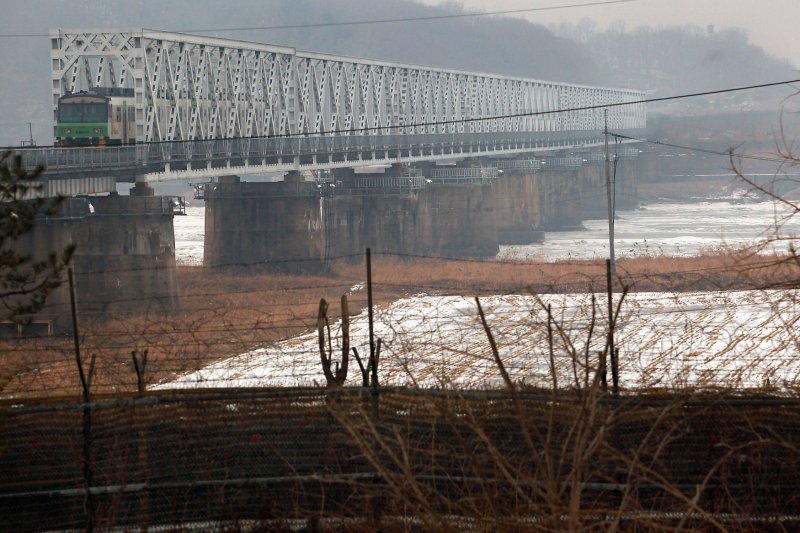A barbed wire fence guards the Freedom Bridge, connecting South Korea to the Demilitarized Zone (DMZ) and North Korea as a train crosses it from Seoul in 2013. North Korea is seeking to attract foreign capital through special economic zones, a 6,000-page North Korean document revealed. File Photo by Stephen Shaver/UPI |
License Photo
SEOUL, May 19 (UPI) -- North Korean leader Kim Jong Un is planning 24 special economic zones in North Korea to attract foreign capital to the isolated country.
The blueprint for North Korea's economic transformation is a 6,000-page document, of which 4,000 pages describe the South Korean economic model, reported South Korean newspaper JoongAng Daily.
The plan aligns with Kim Jong Un's New Year's declaration, in which he emphasized the importance of collecting investment resources. The strategy includes plans to attract foreign capital through special economic zones.
The data confirmed that a North Korean economic development zone law was passed in May 2013, and North Korea subsequently designated five areas as "central-level zones," 19 sites as "regional-level economic zones," which suggests a total of 24 zones could be open to foreign capital investments.
Analysts told the JoongAng that two-thirds of the blueprint was an in-depth examination of South Korea's economic model – evidence of Kim Jong Un's deep interest in the example South Korea had to offer to Pyongyang.
Experts said that of the zones, the Yalu River Economic Development Zone holds the most promise, with its close proximity to the Chinese border city of Dandong.
It is likely that area would receive its power supply from China, and export manufactured goods to Asia's largest economy by land. North Korea plans to attract $240 million in investments to develop the zone's infrastructure, which could possibly mean factories but also agriculture and tourism.
Another planned site, the Hyondong Development Zone on North Korea's eastern coast, would probably attract Japanese capital. Last October, the deputy editor of Japanese business magazine Toyo Keizai told Voice of America that he visited with North Korean officials, who told him they would entrust one or two zones with the Japanese.
Special zones in North Korea are not new – the country has attempted development since 1991.
Multilateral economic strategies, however, are gaining pace in North Korea.
Last November, Yonhap reported that 40,500 tons of Russian coal arrived in South Korea through the Hasan-Rajin railway that connects Russia and North Korea. In April, South Korean newspaper Asia Business reported another 47,000 tons of Russian coal arrived in South Korea from the North Korean port of Rajin.















